Clouds of Sils Maria is Olivier Assayas’s layered chamber piece about women, aging, authorship, and the hall-of-mirrors space where rehearsal bleeds into life. Juliette Binoche plays Maria, a star asked to revisit the play that made her famous—only now she must switch from the seductive upstart (Sigrid) to the wounded older woman (Helena). Opposite her: Kristen Stewart as Valentine, the razor-smart assistant who becomes Maria’s sparring partner, mirror, and maybe-more; and Chloë Grace Moretz as Jo-Ann, the mercurial It-girl cast as the new Sigrid. Desire here is mostly subtext—queasy, electric, and deliberately unresolved.

Decades after her breakout as Sigrid in Maloja Snake, Maria is invited to perform the opposite role: Helena, the senior executive destroyed by Sigrid’s cold-blooded mind games. Rehearsing in the Alps with Valentine, Maria keeps slipping between script and life. Their read-throughs sting like arguments; their arguments sound like lines.
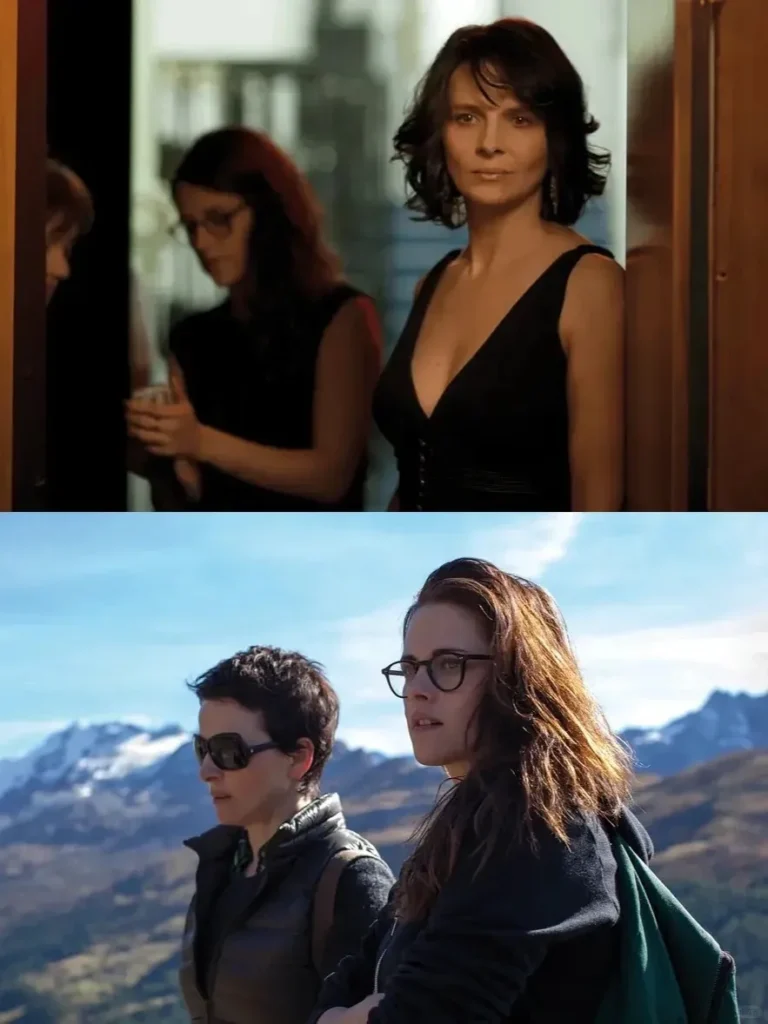
Valentine champions pop culture and blurred boundaries; Maria clings to old-school authority and control. In hikes through the Engadin and night drives through fog, they test each other’s readings of Helena/Sigrid—who’s cruel, who’s free, who’s trapped by time. As Maria watches the tabloid-magnet Jo-Ann—a contemporary Sigrid—maneuver the media and the role with unnerving poise, she confronts her own jealousy and fear of obsolescence. The Maloja cloud formation snakes across the valley, and Valentine vanishes from the film as abruptly as mist, leaving Maria to face opening night with a new, harder calm.
Clouds of Sils Maria Cast
Charactor
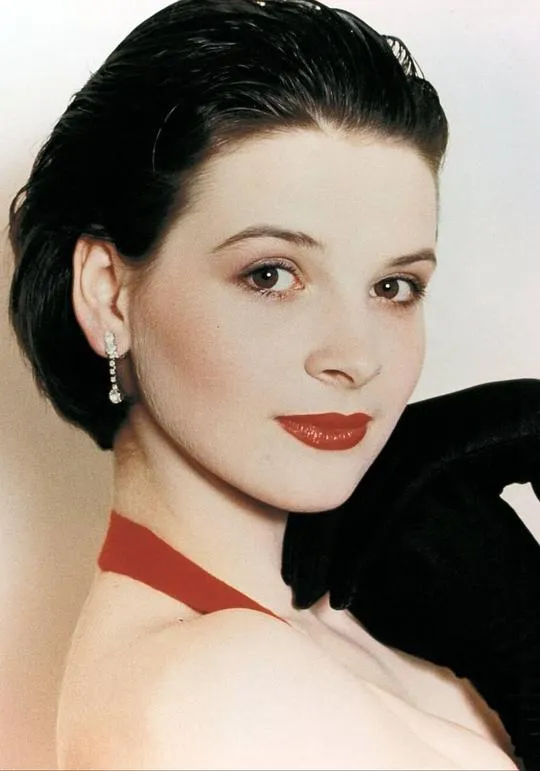
A celebrated actress forced to play the role she once destroyed. Proud, scared, and still sharp enough to cut.
Juliette Binoche
Juliette Binoche (The English Patient, Certified Copy) threads authority with fragility, turning Maria’s ego and doubt into oxygen for every scene.

Maria’s assistant: savvy, contrarian, pop-literate; both stage manager and scene partner.
Kristen Stewart
Kristen Stewart (Personal Shopper, Spencer) gives Valentine a modern, restless intelligence—the performance that cemented her as one of the most interesting screen presences of the 2010s.

A scandal-courting starlet and cunning new Sigrid who flatters, then sidelines Maria.
Chloë Grace Moretz
Chloë Grace Moretz (Kick-Ass, Hugo) plays Jo-Ann as a media-age strategist: smile forward, knife behind the back.
Director
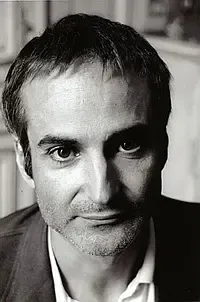
Olivier Assayas
Assayas stages a meta-drama about actresses reading each other as texts. He’s less interested in “answers” than in vantage points: move an inch and Sigrid becomes Helena, villain becomes victim, desire becomes defense.
BEST SCENES
📍 Alpine read-throughs: script lines and personal barbs become indistinguishable; the film’s mirror game at its sharpest.
📍 Night drive to the cloud: music up, roads twisting, a sudden nausea—Valentine as Sigrid avatar, Maria as Helena, reality as rehearsal.
📍 Final rehearsal with Jo-Ann: Maria asks for a lingering look; Jo-Ann’s refusal stings like a verdict from time itself.
📍 The Maloja Snake sighting: nature delivers the film’s metaphor in motion; when the clouds clear, Valentine is simply… gone.
Clouds of Sils Maria Review
Review
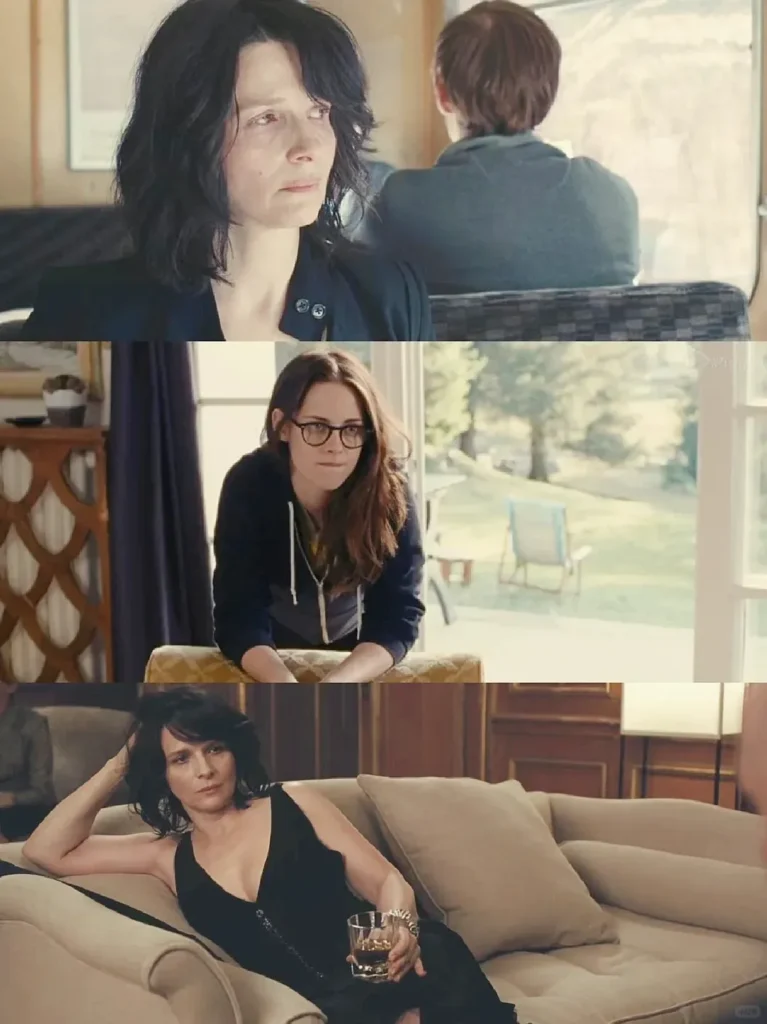
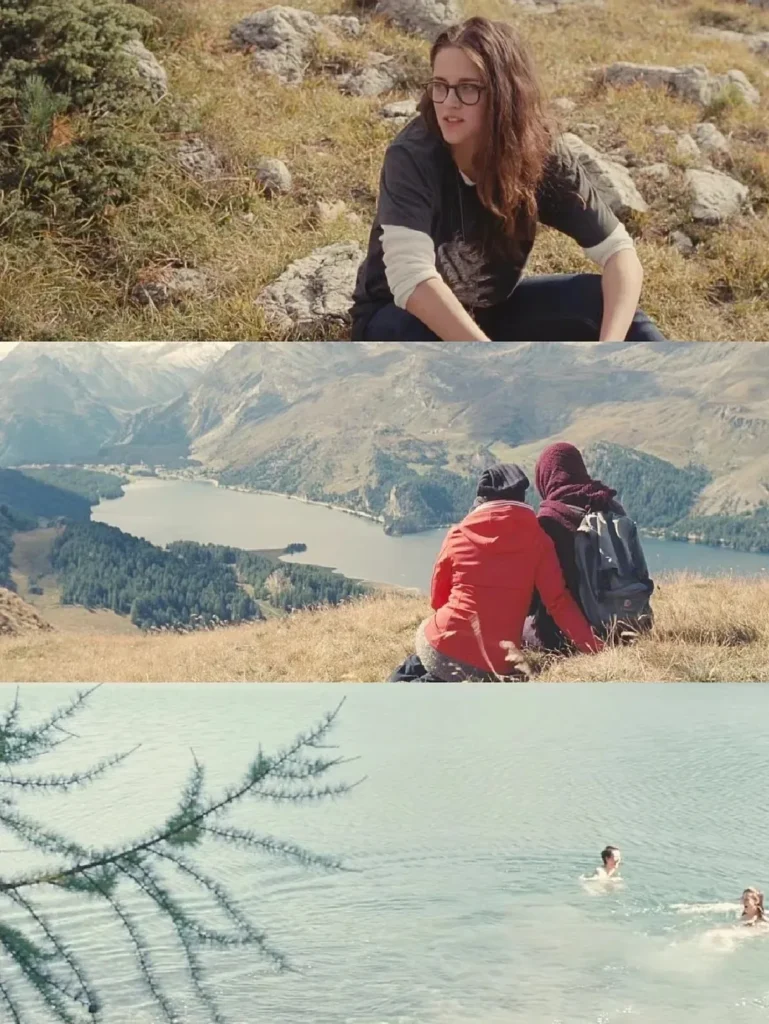
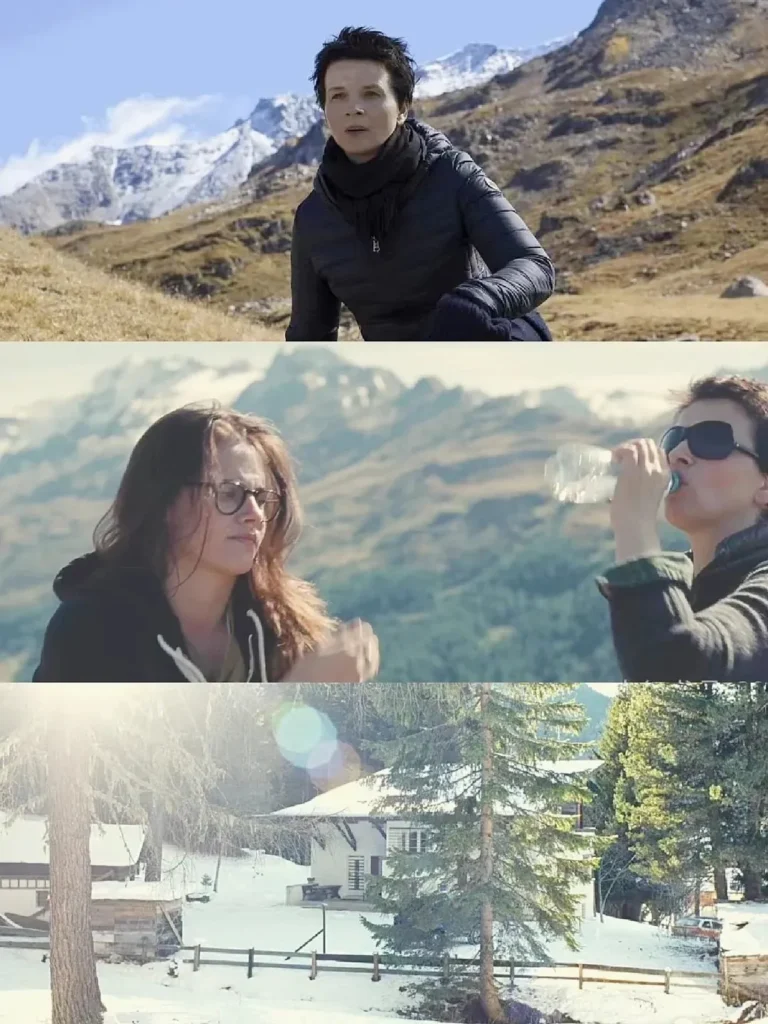
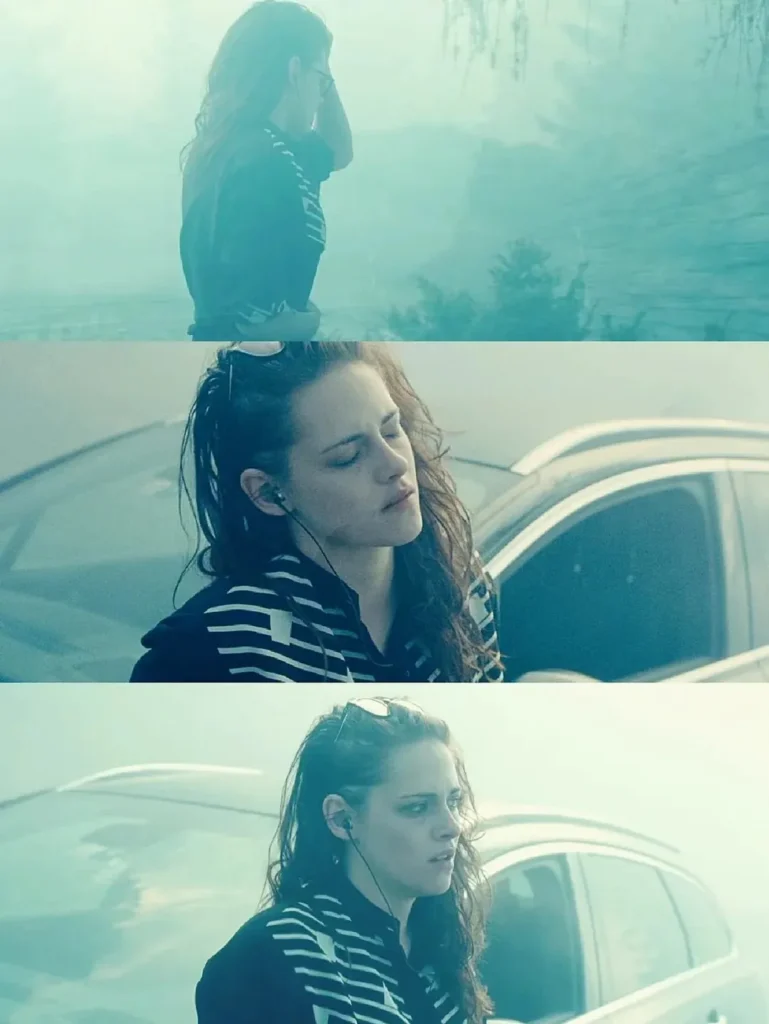
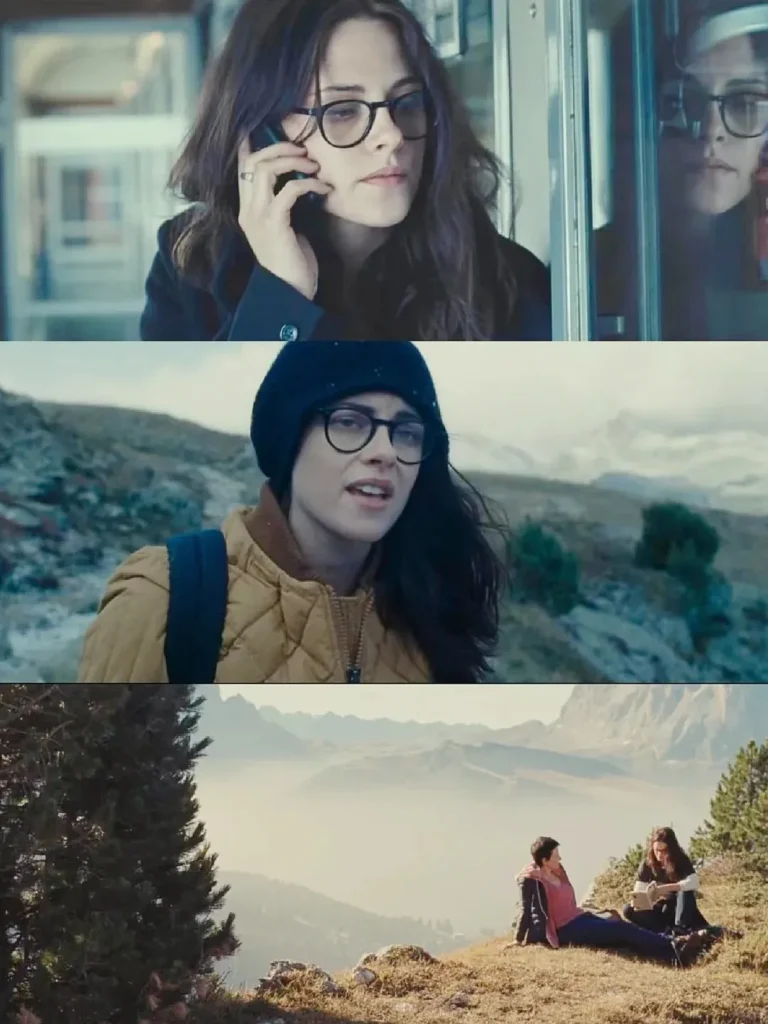
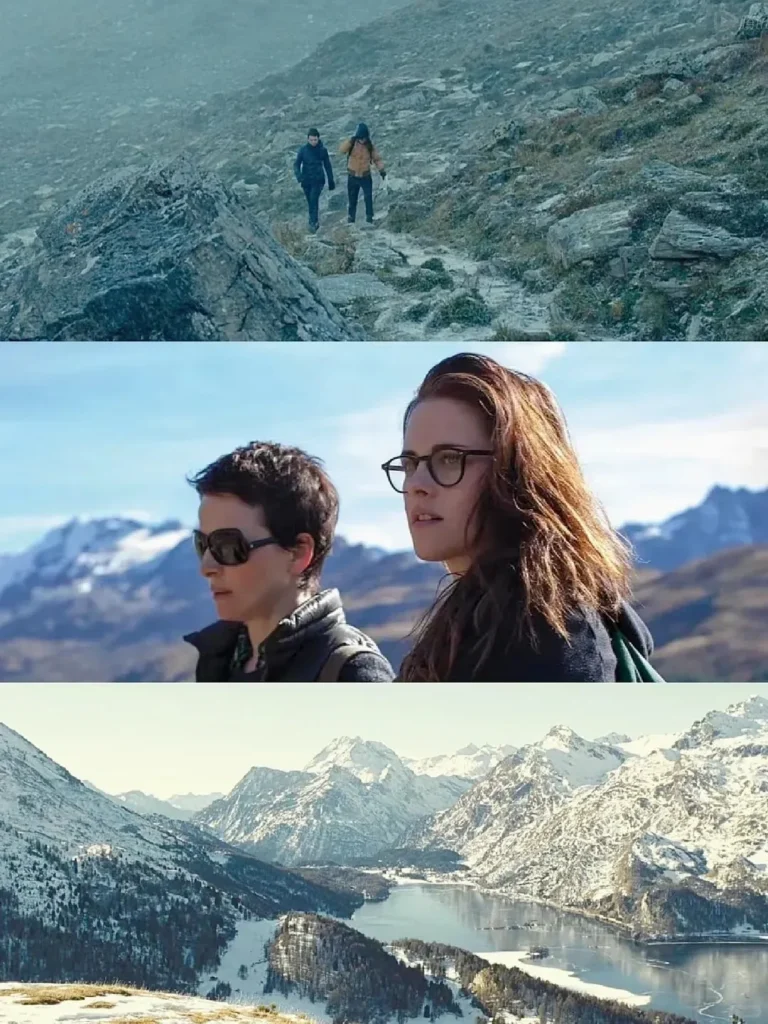
⭐ Story (4.5/5)
Built from conversations that cut like glass, the film uses the play-within-the-film to stage a generational duel. Your reading of a scene changes depending on where you stand—exactly the point the movie keeps making.
⭐ Acting (5/5)
Binoche is magnificent—prickly, vain, terrified, and luminous. Stewart plays Valentine with cool volatility; she’s equal parts confidante and provocateur. Moretz nails Jo-Ann’s mix of strategic charm and moral sloppiness.
⭐ Chemistry (4.2/5)
Maria × Valentine thrums with queer tension—envy, dependence, admiration, a possessiveness neither will name. Assayas keeps it ambiguous on purpose, which makes the dynamic feel truer and more dangerous.
⭐ Production (4.3/5)
Crisp mountain light, hotel rooms that feel like stages, and cutting that blurs “scene vs. reality.” The Maloja Snake cloud becomes a visual thesis: identities coil, merge, disperse.
⭐ Ending (4.4/5)
No cathartic speech, just acceptance. Maria steps into Helena without begging for youth or pity—an earned, unsentimental grace note.
💬 My Take
You called it: three mirrors. Maria (the classic), Valentine (the present), Jo-Ann (the algorithm). The film asks who gets to author a woman’s story—especially when the “text” is her own body aging onstage. I love that it refuses easy labels: not a lesbian romance, but absolutely charged with queer undertones. The cloud isn’t just a metaphor for time; it’s a reminder that identity is weather—patterned, unpredictable, real.
Clouds of Sils Maria Information
🎖 Awards & Recognition
67th Cannes Film Festival – Main Competition (Palme d’Or Nomination) – Olivier Assayas
40th César Awards – Best Film (Nomination) – Charles Gillibert / Olivier Assayas
81st New York Film Critics Circle – Best Supporting Actress (Winner) – Kristen Stewart
